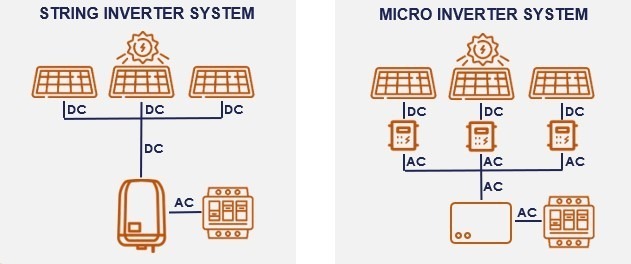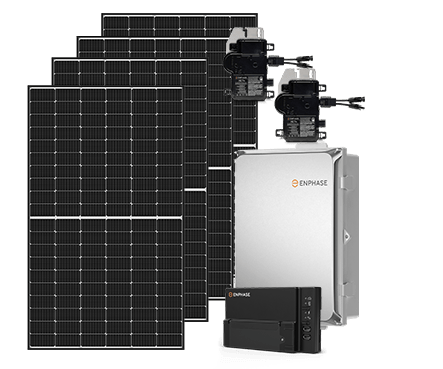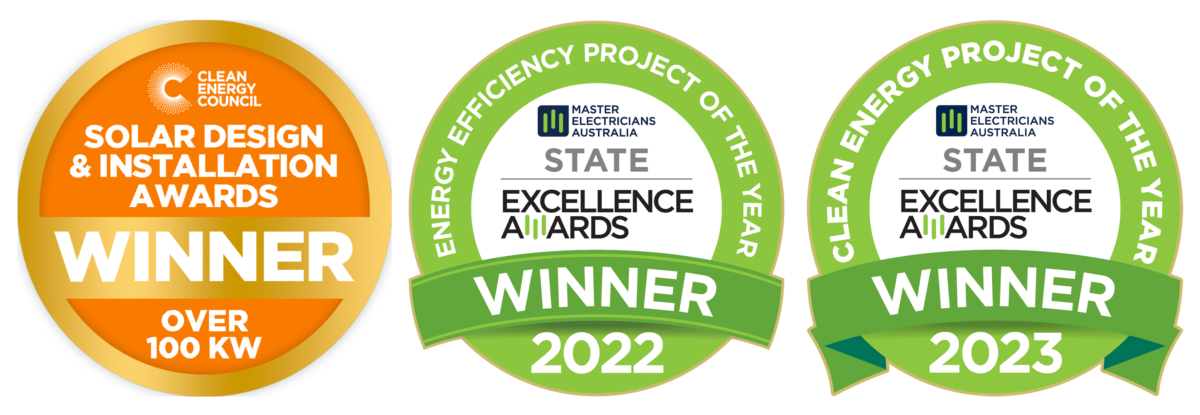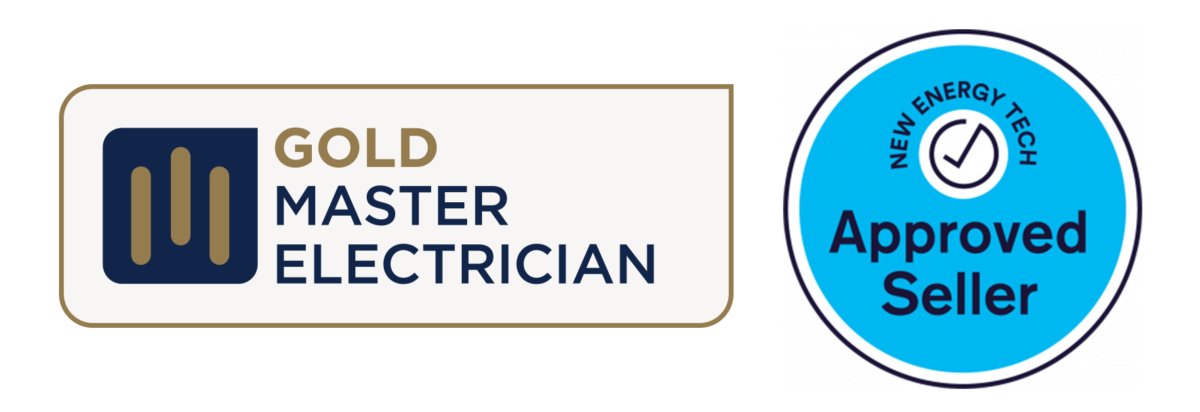When it comes to solar energy systems, one of the most important components is the inverter. The inverter converts DC (direct current) generated by the solar panels into AC (alternating current) that is used in your home or business. There are two main types of inverters available for solar energy systems: string inverters and micro inverters. While both options have their benefits, there are some key differences between the two that may affect your decision.

String Inverter Solar System
The traditional choice for many solar energy systems is the string inverter. As the name suggests, a string inverter is connected to a “string” of solar panels, with the DC current from all of the panels being combined before being converted to AC power. This type of inverter is often less expensive than a micro inverter, making it a popular choice for smaller solar energy systems.
One of the benefits of a string inverter is that it is relatively simple to install and maintain. It is also easy to monitor the performance of the entire string of panels, as the inverter measures the output of the entire string. However, there are some downsides to using a string inverter, especially when it comes to efficiency.
One of the challenges with a string inverter is that the performance of the entire string of panels is dependent on the performance of the weakest panel in the string. If one panel is underperforming due to shading, damage, or other issues, the entire string will suffer a reduction in energy yield. This can be a significant problem if your solar panels are subject to shading at different times of day or if some panels are damaged or malfunctioning.


Micro Inverter Solar System
A newer and more expensive technology that is gaining popularity is the micro inverter. With a micro inverter, each solar panel is connected to its own inverter, which means that the DC current from each panel is converted to AC power independently. This type of inverter is more efficient than a string inverter, as it allows each panel to operate at its optimal level.
One of the benefits of a micro inverter is that it allows for more precise monitoring of the performance of each individual panel. This can make it easier to identify and diagnose any issues that arise with specific panels, and it can also make it easier to optimize the performance of each panel. Additionally, a micro inverter can be a good choice for solar energy systems that are subject to shading, as the performance of each panel is independent of the others.
However, there are some downsides to using a micro inverter. One of the biggest drawbacks is the cost – micro inverters are typically more expensive than string inverters. This makes it challenging to justify the cost of using micro inverters for smaller solar energy systems, as the potential increase in energy yield may not be worth the additional cost.

Common Myths about Micro Inverters
You’ve probably heard the sales pitch about micro-inverters being the ultimate choice and safest method of generation. This isn’t always the case. The following are some of the common myths about micro inverter systems:
- Reduced fire risk: In years of past, rooftop isolators were indeed a point of failure for any solar system. Exposed to harsh weather, most old DC isolator housings were not up to the task and needed regular inspections to ensure safe operation. A change to Solar Installation Standards in 2021 means that rooftop isolators are not installed on new systems. Furthermore, all DC cabling through ceilings must be fully enclosed in heavy duty conduit and is clearly labelled. Micro Inverters do not reduce the risk of rooftop fires.
- Use of “AC Panels”: There is no such thing as an AC solar panel. All panels generate electricity from the sun in the form of Direct Current (DC). Micro inverters are attached to the underside of panels in order to convert the DC energy generated to Alternating Current (AC).
- Low maintenance: Micro inverters need to be monitored and undergo regular inspections and maintenance the same as any other inverter. Subjected to direct heat on the roof, does however mean that special attention must be given to micro inverters to ensure efficient operation.
- Low Failure: There are many more components in a micro inverter system. In a standard 5kW system, there may be up to 15 micro inverters. Theoretically meaning the inverters are 15 times more likely to have the same failure rate than a single string inverter.
- Improved monitoring: With current technology, all inverter manufacturers now offer detailed monitoring platforms for their products. Depending on your property and requirements, a micro-inverter system may provide too much detail; however, if you have a string inverter and would like the added benefit of individual panel monitoring, this can be achieved through panel optimisers.
Which Type of Inverter is Right for You?
Ultimately, the choice between a string inverter and a micro inverter will depend on your specific situation. If you have a small solar energy system that is not subject to shading or damage, a string inverter may be the best choice for you. However, if you have a larger system on more than 3 roof faces or if your panels are subject to shading or damage, a micro inverter may be a better choice.
It is important to keep in mind that the higher cost of a micro inverter may not always be worth the additional energy yield, especially for smaller systems. When considering the type of inverter to use for your solar energy system, be sure to consult with a professional who can help you weigh the pros and cons of each option and make an informed decision based on your specific needs.


